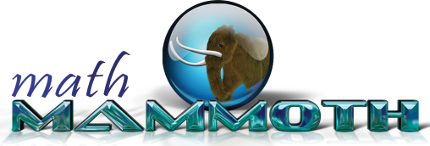Factoring linear expressions: using the distributive property backwards
In this beginner lesson (6th-7th grade), we practice the process of factoring simple, linear expressions.
I start out by using the area of rectangles as a model for factoring: when two rectangles both have one side the same (such as 2 units), we can JOIN them together to form a single, larger rectangle.
For example, if the areas of the individual rectangles are 2x and 2y, then the area of the combined rectangle is 2(x + y). This idea MODELS the mathematical process of factoring 2x + 2y as 2(x + y).
I also factor some linear expressions without using the visual model.
This is the 2nd part of a lesson on the distributive property, and is aimed specifically for 6th grade (standard 6.EE.3), but is also useful for pre-algebra and algebra students. The first part of the lesson explains how to use the distributive property in the simplest possible situations (also meant for grade 6 students).
See also
Math Mammoth Expressions and Equations — a short workbook where you can find worksheets that match this lesson.
Math Mammoth Grade 6 Curriculum — again, contains worksheets to match this lesson.
Math Mammoth Grade 7 curriculum (pre-algebra)
Receive my monthly collection of math tips & resources directly in your inbox — and get a FREE Math Mammoth book!
You can unsubscribe at any time.
